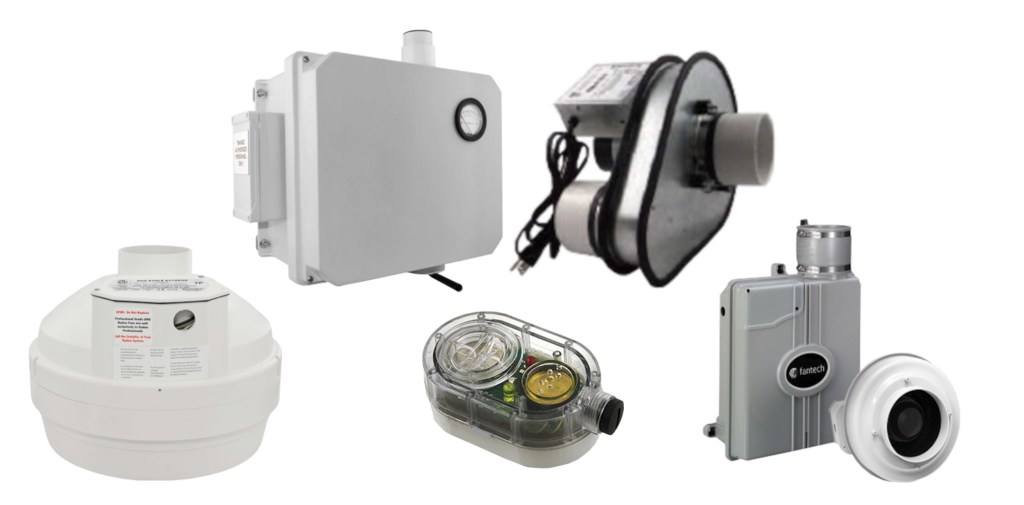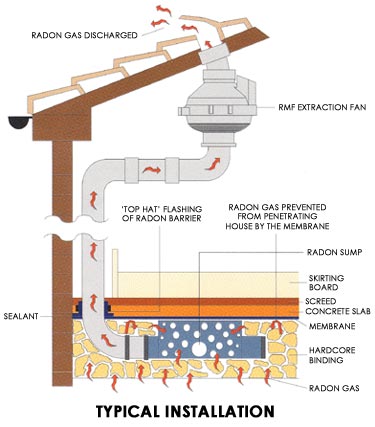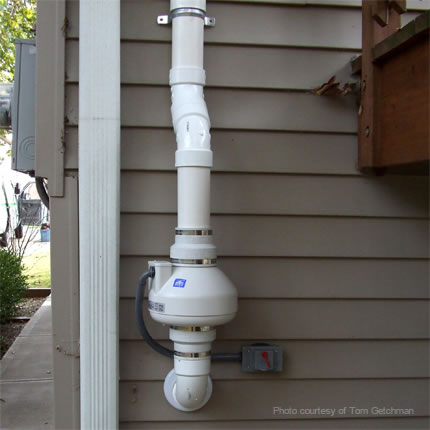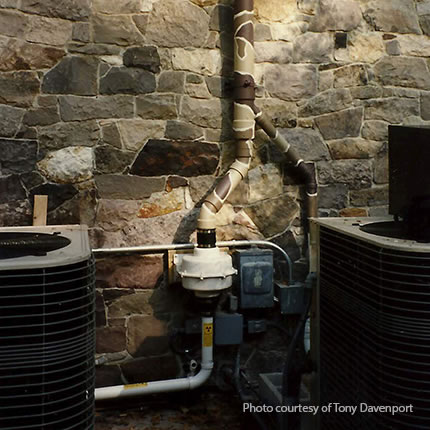
Radon is the second leading cause of lung cancer in the United States. It is a colorless, odorless, and tasteless radioactive gas formed from the decay of uranium in soil, rock, and water. When radon gas seeps into our homes and accumulates to high levels, it poses a health risk, especially when inhaled over prolonged periods. That’s where radon fans save the day.
Radon fans play a pivotal role in radon mitigation systems, ensuring that this harmful gas doesn’t find a permanent residence in our homes. Tjernlund, Fantech, RadonAway and Festa Radon have many radon fans designed for sub slab depressurization (SSD) radon mitigation systems.
How does SSD work?
- PVC Piping System: A series of PVC pipes are inserted into holes drilled through the slab into the soil or gravel below. Typically, only one or two holes are needed for an average-sized home, but this can vary based on the home’s design and radon levels.
- Radon Fan: A specialized radon fan is attached to the PVC piping system. This fan continuously operates to create a vacuum beneath the slab.
- Venting the Radon: The radon fan pulls radon-laden air from beneath the house and safely vents it outside, typically above the roofline, so that it’s dispersed in the atmosphere and doesn’t re-enter the home.
- Sealing Entry Points: To make the system more effective, other potential entry points for radon, like cracks in the foundation or gaps around service pipes, are sealed.
Why is SSD Effective?
- Pressure Differential: By creating a negative pressure beneath the slab, radon gas is less likely to seep into the home due to the natural pressure differences. Instead of moving into your home, the radon gas is drawn into the SSD system.
- Continuous Operation: Radon fans in SSD systems operate 24/7, ensuring a constant vacuum that continually diverts radon away from living spaces.
Choosing the Right Radon Fan
Not all homes and buildings are the same, so radon fans come in different sizes and capacities. The size and structure of your home, the degree of radon contamination, and the type of mitigation system in place all determine the kind of radon fan you’ll need.
While radon might be out of sight and out of mind for many homeowners, the dangers it poses are real. However, thanks to radon fans, we have an effective weapon in our arsenal to combat this silent threat.




